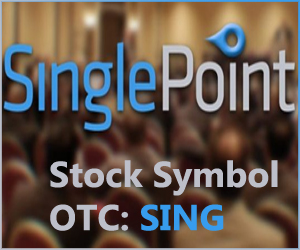Hemp Building Institute Opens to Help Progress Industry Forward
Marijuana Industry News February 4, 2023 MJ Shareholders
Former executive director and current member of the U.S. Hemp Building Association (USHBA), Jacob Waddell, has officially launched the Hemp Building Institute (HBI) to help progress the industry forward.
As the HBI president and founder, Waddell will work alongside a board of directors made up of industry professionals to help tackle industry-wide barriers and educate the public about hemp-building materials, while promoting the advantages of and establishing the necessary standards and testing procedures for such products.
The USHBA submitted a proposal in January 2022 to receive certification for hemp-lime insulation in the U.S. building codes, which the International Code Council (ICC) approved in September 2022. Waddell spearheaded the certification process.
The approval allows for “hempcrete, ‘a mixture of hemp hurds or ‘shiv’ (made from hemp stalks) and a lime binder, [that] creates a long-lasting fibrous insulation for wall assemblies,’ to be used as a standard material in residential construction in low seismic risk areas without required engineer design beginning 2024,” Cannabis Business Times previously reported.
After successfully spearheading that process, Waddell says he’s now focused on facilitating the creation of similar codes and standards for the industry through the HBI.
RELATED: ‘2023 is the Year’: Q&A With U.S. Hemp Building Association President Henry Gage Jr.
“As this industry is developing, we are seeing more and more needs for things to be completed, as well as filing codes and setting standards for materials and processes,” Waddell says. “There’s lots of testing that needs to be done and other ways to prove our value in the market. So the Hemp Building Institute was set up to focus on the scientific end of these objectives.”
Current Projects
The HBI already has several projects in the hopper, including working with the USHBA to complete the final step in the IRC certification process, which is the “commentary” portion, he says. The HBI is also working with the USHBA to submit a proposal in 2024 to receive certification for hemp-lime (hempcrete) insulation in the International Building Code (IBC) for commercial construction.
The current IRC approval allows for hemp-lime (hempcrete) to be used on one- and two-family townhouses and dwellings, whereas the IBC approval would allow for hemp-lime to be used in commercial projects or multistory buildings, Waddell says.
The HBI is also working with the American Society for Testing Materials (ASTM), an international standards development organization, to approve specific testing standards for these materials, such as hemp hurd.
Waddell says because these materials were not widely used in America, the same testing procedures established for other products have not been applied to hemp.
“For instance, in the fiber industry, there are lots of tests and an established process for grading and processing cotton. We don’t have that same system set up for hemp. That’s an issue.
“The same thing is with the hemp hurd, which is what’s used in hempcrete. We don’t have established testing procedures to create and define it. … due to the fact that there is not a global alignment of testing standards, we need to establish American standards and a test procedure to qualify material,” he says.
Waddell adds that it is currently safer for companies to purchase products from foreign markets with some testing and quality control standards, rather than from the U.S.
RELATED: How Sustainability is Driving the Hemp Building Industry in Europe and the U.S.
“We need to establish that in the United States to become competitive. So these testing standards for the hemp hurd are a step towards that,” he says.
Moreover, the HBI is working with Americhanvre, a hemp building solutions company, to create R-Value test samples based on an ASTM test procedure it developed.
“R-value is a measurement of insulation properties,” Waddell says. “So, we are testing samples to get their insulation value. Hempcrete is primarily used as an insulation so accurate testing of these properties is critical to compete in the insulation market.. … We’re helping to execute that testing. Basically, we are walking the test samples through the lab and making sure everything works and troubleshooting any issues if it doesn’t.”
He says that the HBI is also supporting efforts to test hemp-lime construction in Kenya and establish building codes there.
The Future
Looking ahead, the HBI will continue to seek grant funding for industry projects.
“Once we get bigger and bring in more money, we hope to expand the participants and the employees,” he says. “The overall strategy is to program manage different projects that need to be done by the industry.”
The HBI will also work to develop affiliate programs in conjunction with various industry groups and associations, as well as establish an advisory board to oversee specific projects and strategies.
“The longer-term goals, in general, are to mainstream this material to make it so that it is a common option considered by home builders and consumers when they are either building new construction or renovating current construction,” he says. “More specifically, as the Institute, it would be ideal for us to be in a position where we could perform the testing necessary to qualify materials for the industry to help streamline that process and allow more products to enter the market and have success.”
MJ Shareholders
MJShareholders.com is the largest dedicated financial network and leading corporate communications firm serving the legal cannabis industry. Our network aims to connect public marijuana companies with these focused cannabis audiences across the US and Canada that are critical for growth: Short and long term cannabis investors Active funding sources Mainstream media Business leaders Cannabis consumers










